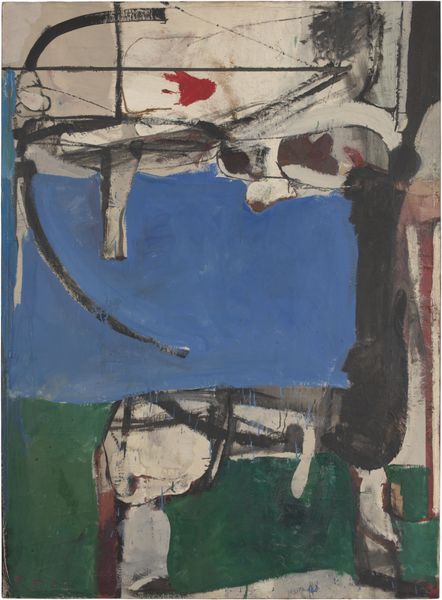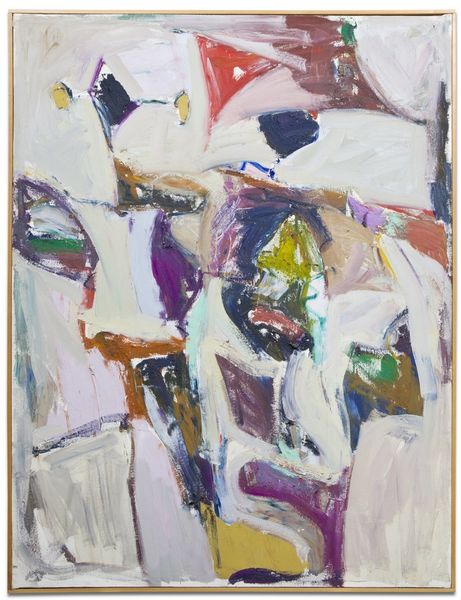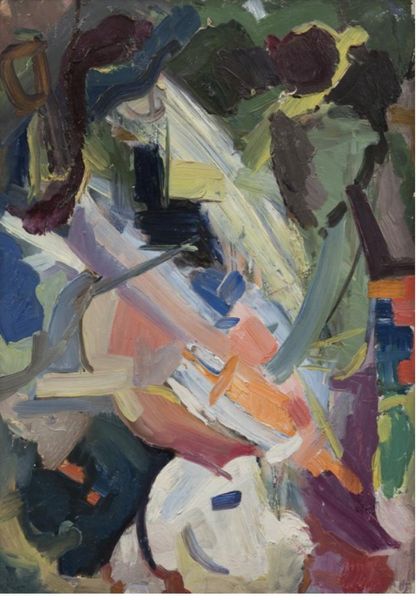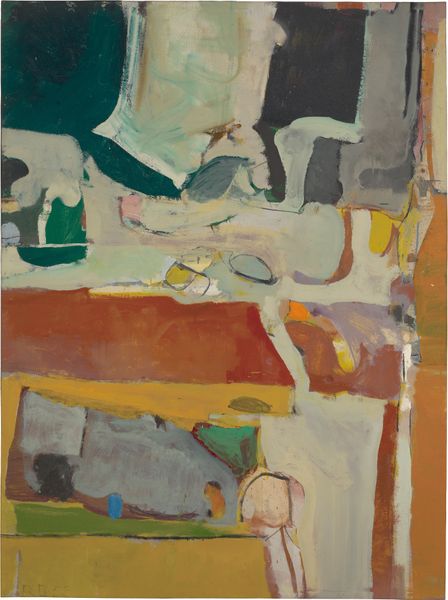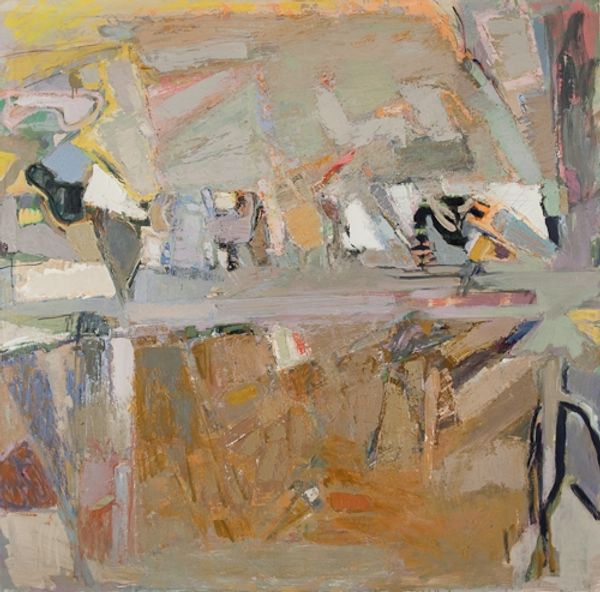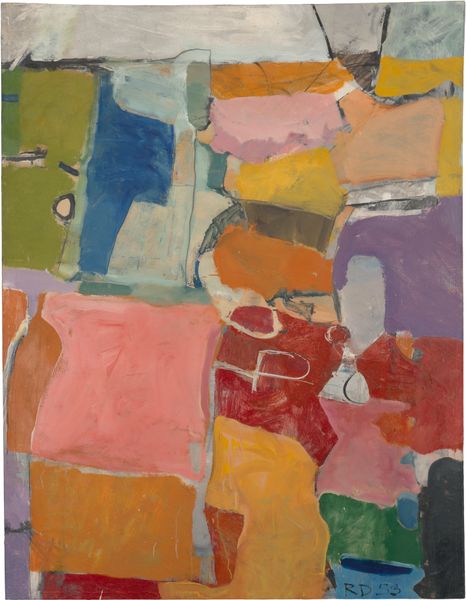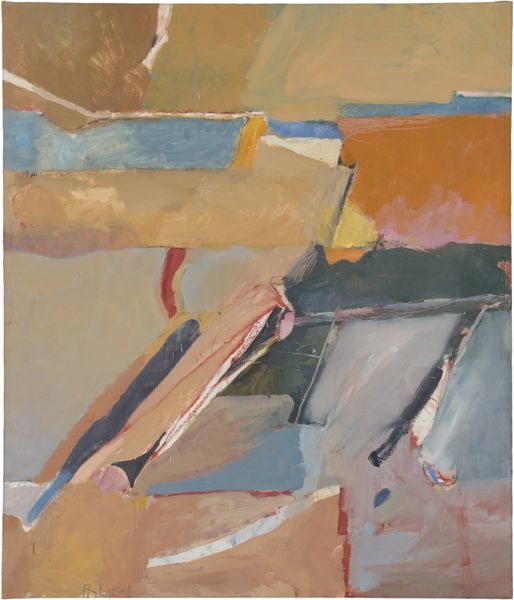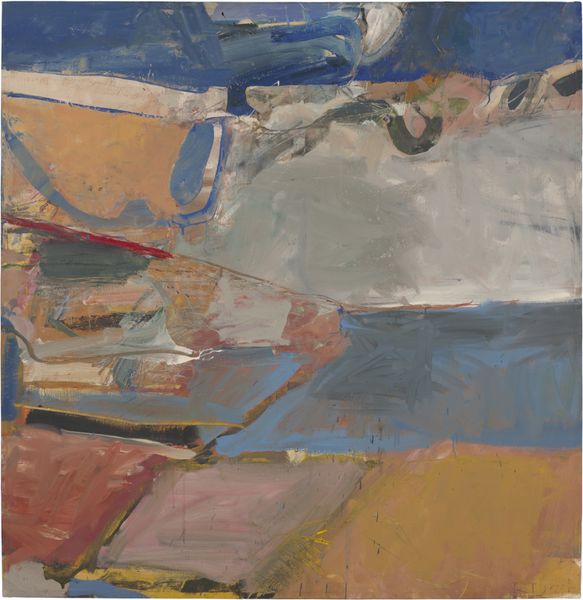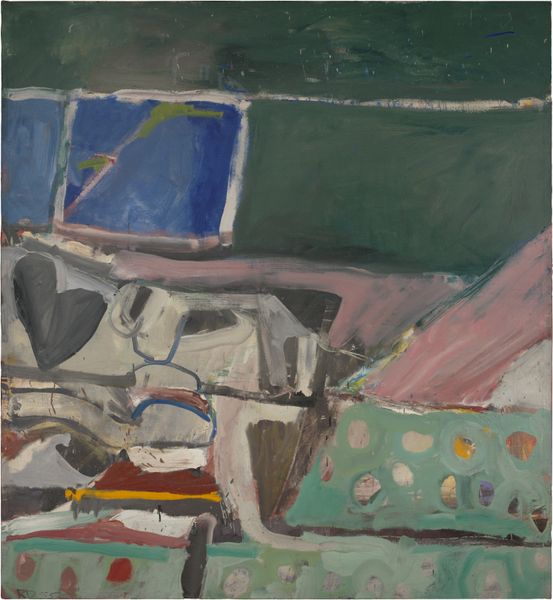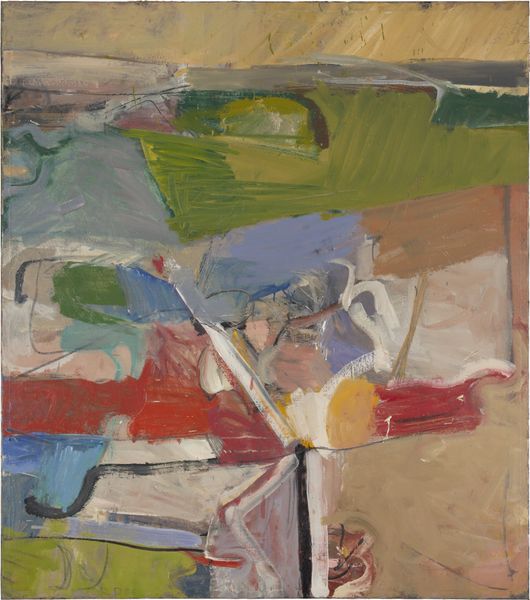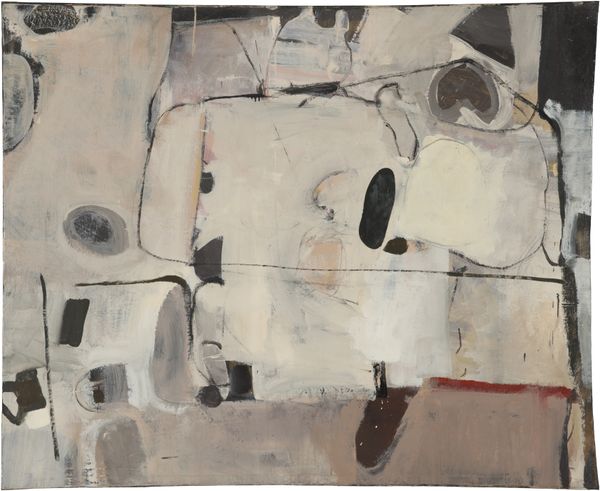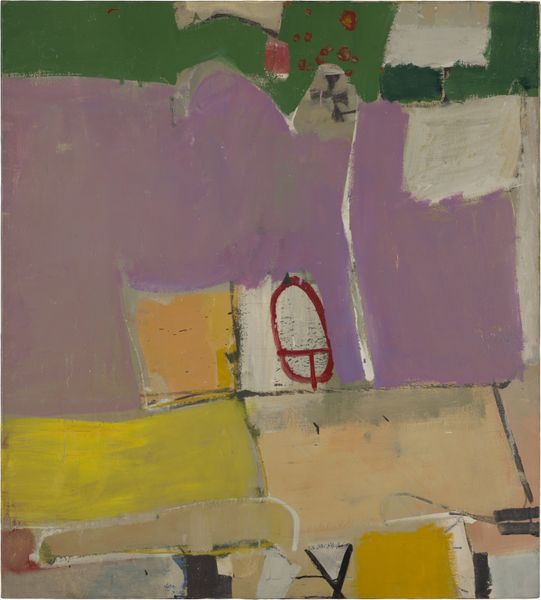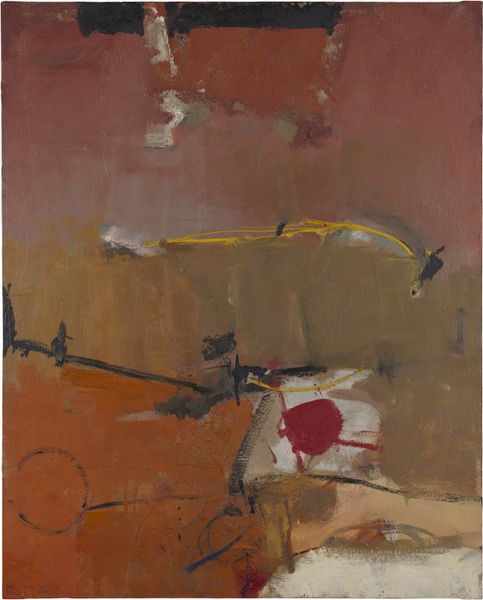
oil-paint, impasto
#
abstract-expressionism
#
oil-paint
#
form
#
oil painting
#
impasto
#
bay-area-figurative-movement
#
acrylic on canvas
#
abstraction
#
line
#
modernism
Dimensions: 175.9 x 147.3 cm
Copyright: Richard Diebenkorn Foundation
Editor: Here we have Richard Diebenkorn's "Urbana #6," painted in 1953 using oil paint. The interplay of colors and shapes makes me feel like I'm looking at a half-remembered landscape. How do you interpret this work? Curator: I see this painting as a visual record of its time. The mid-20th century was a period of significant social and political upheaval, particularly regarding issues of urban planning and social segregation. Consider how Diebenkorn uses abstraction; are there tensions, or contradictions that mirror these societal shifts? Editor: I can definitely see the tension. There's a push and pull between the geometric and organic shapes. Do you think Diebenkorn was consciously trying to make a statement about urban life? Curator: It's less about a direct statement and more about a reflection of the anxieties and complexities inherent in the post-war American landscape. Look at the muted color palette. What feelings does it evoke? Editor: A sense of uncertainty, maybe even confinement. Was Diebenkorn part of any specific artistic or political movements that influenced his work? Curator: He moved through several styles. His shift towards abstraction coincided with a broader artistic exploration of form and identity after the war. Many artists grappled with representing the human condition in a world irrevocably changed. Think about how abstraction, in itself, can be a powerful tool for expressing the inexpressible. Editor: So, the ambiguity of the painting is actually a strength, reflecting a broader sense of unease. I had originally looked at this work as just colors and shapes, but I can now see how it mirrors this specific point in history. Curator: Precisely! Art often operates on multiple levels, reflecting both personal expression and wider social realities. Considering context allows for a much richer and insightful interaction.
Comments
No comments
Be the first to comment and join the conversation on the ultimate creative platform.
